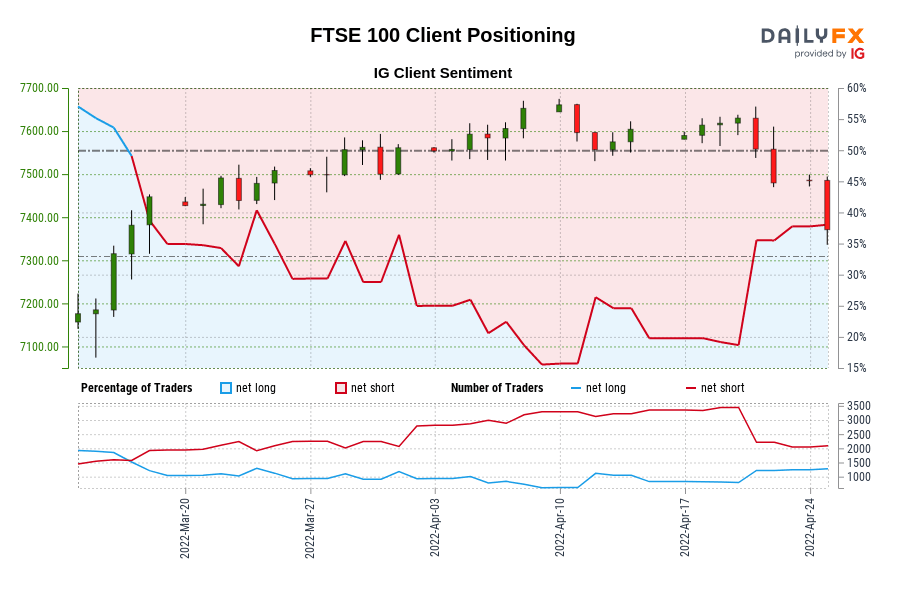Number of traders net-short has decreased by 44.16% from last week. SYMBOL TRADING BIAS NET-LONG% NET-SHORT% CHANGE IN LONGS CHANGE IN SHORTS C

Number of traders net-short has decreased by 44.16% from last week.
|
SYMBOL |
TRADING BIAS |
NET-LONG% |
NET-SHORT% |
CHANGE IN LONGS |
CHANGE IN SHORTS |
CHANGE IN OI |
|
FTSE 100 |
BEARISH |
50.24% |
49.76% |
46.37%
128.55% |
-10.86%
-44.16% |
10.93%
-9.99% |
FTSE 100: Retail trader data shows 50.24% of traders are net-long with the ratio of traders long to short at 1.01 to 1. In fact, traders have remained net-long since Mar 17 when FTSE 100 traded near 7,381.50, price has moved 0.14% lower since then. The number of traders net-long is 46.37% higher than yesterday and 128.55% higher from last week, while the number of traders net-short is 10.86% lower than yesterday and 44.16% lower from last week.
We typically take a contrarian view to crowd sentiment, and the fact traders are net-long suggests FTSE 100 prices may continue to fall.
Our data shows traders are now net-long FTSE 100 for the first time since Mar 17, 2022 when FTSE 100 traded near 7,381.50. Traders are further net-long than yesterday and last week, and the combination of current sentiment and recent changes gives us a stronger FTSE 100-bearish contrarian trading bias.
element inside the
element. This is probably not what you meant to do!Load your application’s JavaScript bundle inside the element instead.
www.dailyfx.com
